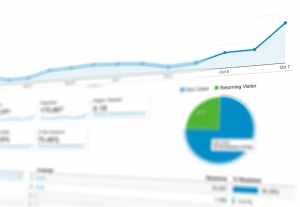The First Metrics You Should Look at When Starting SEO
Search engine optimization is a full-time job, especially for big websites. Without it, site visitors won’t find your pages, and you’ll get buried in the depths of search results.
For beginners, SEO can be overwhelming. It’s a task, though the effort is worth it once organic traffic starts streaming into your website.
The following are some of the basic metrics that you have to know even before you start your first SEO campaign.
Organic traffic
Organic traffic refers to the visits you get directly from search engine queries. This isn’t paid or sponsored traffic, which means your website has been discovered by a visitor searching on the web.
In addition, organic traffic is the most valued traffic that a website can ever get. The rate of organic traffic is a gauge of how successful your SEO efforts are.
You can easily check your website’s organic traffic through Google Analytics or another analytics tool.
Organic click-through rates
Click-through rate or CTR refers to the number of people who see your SERP result divided by the actual number of people that clicked through your page. This proportion says a lot about the attractiveness of your meta data and how well you’re targeting your preferred audience.
Basically, your website’s CTR depends a lot on your ranking on search engines. The higher your exposure is, the higher the chance you’re getting CTR rates.
Feel free to experiment on your meta description, titles, and tags. If you have a deeper knowledge of SEO, you can try placing jump to links on your SERP entry to increase CTR.
Bounce rates
Bounce rates refer to how often people leave your website before performing any action. The goal here is to have the lowest possible bounce rate and high dwell time.
Nevertheless, a high bounce rate isn’t always negative. Depending on your niche and type of pages accessed, a higher bounce rate than normal could be acceptable.
For blog posts, it’s quite normal to have a high bounce rate, especially if it’s purely informational. This means that the visitor read and left. The defining factor here is the dwell time.
SERP dominance
SERP dominance pertains to how well your pages are performing on the SERPs in relation to your ranking.
For example, you can rank at #1 and have 50 visitors a day. Meanwhile, you can also rank at #5 and get 100 visitors within the same timeframe. In these two situations, the page that ranks at #5 has better SERP dominance.
This just proves that SEO is no longer about ranking the highest. It’s also about being relevant and attracting visitors to click through your page.
Pages per session
Pages per session measures how many pages a specific visitor visited in average within one session. Take note that one session is 30 minutes by default.
This gives a more accurate measurement of your website’s performance instead of considering time on the page alone. Pages per session indicate the engagement of your visitors. You can find this data on the Behavior Flow portion of Google Analytics.
- What you need to know about user intent - March 21, 2020
- How to quickly increase search visibility - March 21, 2020
- What are the best SEO site audit tools? - March 21, 2020



